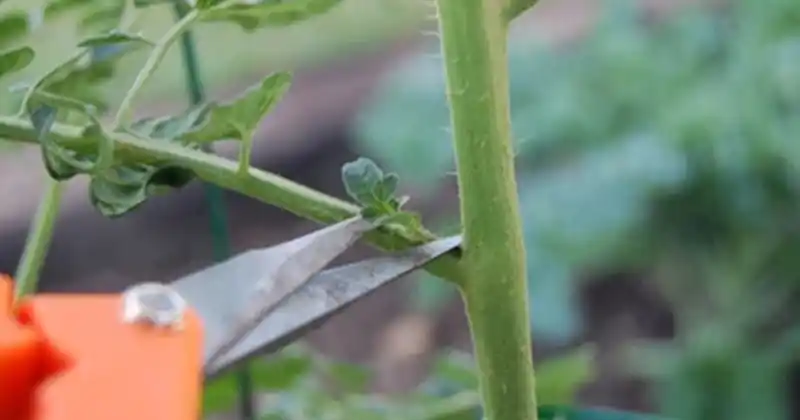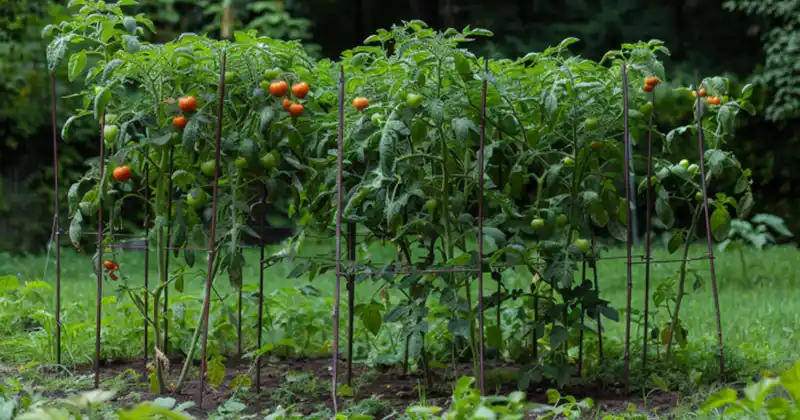Ultimate Guide to Growing Tomatoes: Maximize Your Harvest, Not Your Foliage
Tomatoes are arguably the most cherished garden vegetable, renowned not just for their culinary versatility but also for the joy of growing them. However, many gardeners find themselves nurturing massive plants with an abundance of leaves but few fruits. This guide will walk you through expert techniques to cultivate tomatoes that yield more fruits of superior quality, focusing on planting, pruning, staking, and care, while also managing common pests and diseases.

Selecting the Ideal Spot
The journey to a bountiful tomato harvest begins with planting. Choose a location that receives at least eight hours of direct sunlight daily. Tomatoes thrive in well-drained, slightly acidic soil enriched with organic matter. The key to robust growth is planting your tomatoes deep. Tomato stems develop roots along their buried sections, enhancing the plant’s stability and nutrient uptake. Strip the lower leaves and bury the stem deep into the soil, leaving only the topmost leaves exposed. This encourages a stronger, more extensive root system.
Pruning and Training for Better Yield
Pruning is essential in managing tomato growth and maximizing fruit production. By understanding the natural growth habit of tomatoes, you can effectively guide the plant’s energy towards producing fruits rather than foliage. Tomatoes tend to sprawl and root along the stem if allowed to grow on the ground. To prevent this and encourage vertical growth, support your plants with stakes, cages, or trellises.

For indeterminate varieties (those that grow and produce fruit continuously throughout the season), regularly remove the suckers. These are the shoots that appear in the axils of the leaves. By pruning these, you focus the plant’s energy on the main fruit-bearing stems.
Determinate varieties (which grow to a fixed height and produce all their fruit at once) do not usually require as much pruning. They are ideal for gardeners who wish to harvest all their tomatoes at once.
Effective Staking Techniques
Supporting your tomatoes is crucial, especially for indeterminate varieties that can grow quite tall. Use sturdy stakes or trellises to keep the plants upright. This not only helps the plant stay healthy by improving air circulation around the foliage but also makes harvesting easier and helps prevent soil-borne diseases.

Watering and Fertilization for Optimal Growth
Consistent moisture is vital for tomato plants. Uneven watering can lead to problems such as blossom end rot or cracked fruits. Set up a drip irrigation system to provide a steady amount of water directly to the roots, avoiding moisture on the leaves which can lead to fungal diseases.
When it comes to fertilization, use a balanced approach. Start with a phosphorus-rich fertilizer to encourage good root development. As the plants grow, switch to a fertilizer higher in potassium to promote fruiting and flowering. Avoid high nitrogen fertilizers, which encourage leafy growth at the expense of fruits.
Managing Pests and Diseases
Tomatoes can attract several pests and diseases. Common issues include tomato hornworms, aphids, and fungal infections like early blight and powdery mildew. Regular inspection of plants is crucial. Remove pests by hand and treat diseases early with appropriate organic fungicides like neem oil. Keeping the garden clean and removing affected plant parts promptly can prevent the spread of diseases.
Additionally, employ proactive measures such as crop rotation and using resistant tomato varieties to minimize disease issues.
Special Tips for Enhanced Tomato Health
A surprising tip involves the use of aspirin – yes, the common medicine cabinet staple. Dissolving aspirin in water and spraying it on your tomato plants can mimic the effect of the salicylic acid produced naturally by stressed plants. This boosts the plant’s immune system, making it more robust against pests and diseases.
Growing tomatoes is a rewarding endeavor that combines gardening skill with a bit of plant psychology. By understanding and catering to the needs of your tomato plants, you can significantly increase both the quantity and quality of your harvest. Remember, the goal is to grow tomatoes, not just leaves. Implement these strategies, and you’ll enjoy a garden teeming with delicious, ripe tomatoes ready for your table. Happy gardening!



















